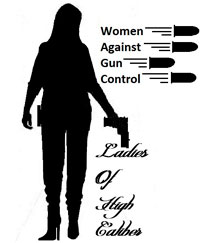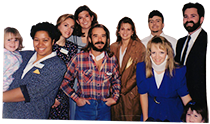Armed & famous
FYI (copy below):
http://www.washingtontimes.com/culture/20020314-87376066.htm
=======================================================
March 14, 2002
Armed & famous
By James L. Pate
SPECIAL TO THE WASHINGTON TIMES
Clint Eastwood, a k a Dirty Harry, ruled the streets of San
Francisco with his Smith & Wesson .44-magnum, tracking down
bad guys he dared to try to get away.
In outer space, a young Luke Skywalker learned to wield a
light saber while trying to harness the Force under the
tutelage of Obi-Wan Kenobi.
Both excel on the big screen with their weapons of choice,
which will be on display beginning tomorrow in “Real Guns of
Reel Heroes” at the National Rifle Association’s Firearms
Museum in Fairfax.
Dirty Harry’s .44-magnum “is culturally and historically
significant. You could find a cop in every country in the
world who is familiar with the line, ‘Go ahead. Make my
day,’” said Philip Schreier, the museum’s curator of
programs.
The exhibit “is going to cross popular culture boundaries,”
he says. “This will probably attract people who are
fascinated with films but would never otherwise care about
or talk about seeing guns in their lives.”
Whether or not an actor or actress favors gun control, it
would be difficult to find a performer who has not acted in
a production involving firearms. Mr. Schreier is counting
on this to attract fans of all political persuasions to the
show.
“[I]f you say you’ve got the actual rifle Paul Newman used
in ‘The Life and Times of Judge Roy Bean’ — this 1887
Winchester,” he says, picking up the lever-action original,
“we think they’ll beat a path to your door.”
Charlton Heston, a film legend and president of the National
Rifle Association, will headline the opening of the exhibit
tonight at an invitation-only gala.
The exhibit includes numerous movie stills, old film
posters, holsters, knives, hats and other clothing, as well
as firearms used in well-known war movies and police
thrillers. Also to be displayed are several fake weapons
seen in such science fiction hits as “Planet of the Apes,”
“Star Wars” and “Ghostbusters.”
“Every kid knows, ‘May the Force be with you,’” Mr. Schreier
says as he shows off two “light sabers” used by characters
Luke Skywalker and his Jedi master, Obi-Wan Kenobi, in the
“Star Wars” epic.
Mr. Schreier, a former inspector for the Bureau of Alcohol,
Tobacco and Firearms, spent the past four months working
with two consultants — gun magazine editor Garry James and
Dan Gagliasso, a screenwriter and director — to organize the
exhibit.
Like the gun Mr. Eastwood used in the “Dirty Harry”
thrillers, many in the exhibit are on loan from the private
collections of people in the film industry, including Mr.
Heston and Tom Selleck. Dirty Harry’s magnum, with an
estimated worth of about $500,000, is owned by John Milius,
a writer and director of many popular films, including “Red
Dawn” and “Jeremiah Johnson.”
The scores of shotguns, rifles, revolvers, machine guns and
other weapons from 20 private collectors were used in films
by Mr. Heston, John Wayne, Katherine Hepburn, Bruce Willis,
Tommy Lee Jones and a litany of others.
Not all of the guns in the exhibit were used in films or
television productions.
“The most important items I’ve loaned the museum are three
pistols that belonged to Thomas Jefferson,” Mr. Heston said
Monday. “They are in perfect condition, and there’s a
letter that goes with them, handwritten by Jefferson to the
son of a friend of his to whom he gave the guns.
“Most major museums have numerous firearms on display
because guns have played and continued to play an important
role in our history. They are not just weapons; many of the
old ones are works of art. The NRA’s National Firearms
Museum is marvelous — one of the best.”
The NRA is using tonight’s gala to announce the creation of
the Charlton Heston Endowment, which will benefit the
museum, to recognize the actor’s contributions to the
association, its cause and its 4 million members, said NRA
Executive Vice President Wayne LaPierre.
“Particularly in these difficult times, we think this show
will really resonate with people,” he says.
Hollywood’s political advocacy for stricter gun laws “has
not always been the case,” says Stephen P. Halbrook, a
Fairfax lawyer who, besides being the author of several
books on the history of the Second Amendment, also holds a
doctorate in social and political philosophy.
Prior to World War II, anti-gun sentiments in Hollywood were
the exception rather than the rule, he said.
“A lot of the prominent Hollywood stars — the men, at least
– were bird hunters, target shooters and gun collectors,” he
said. “But once Pearl Harbor hit, the gun-control movement
in Hollywood, as small as it was, became irrelevant.”
Over the years, “the shift against the Second Amendment in
Hollywood has been profound,” he says. “Anyone who doesn’t
follow the doctrine of political correctness — it’s
reminiscent of the blacklisting that these same people
condemned in the 1950s — gets dragged across the road and
run over when the new majority get a chance.”
Mr. Milius said it’s “political correctness run rampant,”
and it has affected his career.
“I can cite examples in the last 10 years of my career.
It’s very subtle, but no less insidious,” he said. “The
word goes around that it’s not good to deal with him. They
whisper that you are some sort of right-wing fanatic.”
Mr. Heston’s leadership of the NRA has been fodder for some
late-night TV professional wisecrackers. But he laughs it
off.
“Just look at what’s happened since September 11,” said Mr.
Heston, a B-52 crewman in the Army Air Corps in World War
II. “There’s been a wonderful restoration of pride in
America. People are standing up for themselves and not
waiting for someone else to rescue them. There’s a renewed
sense of right and wrong, and that we must protect and
defend our way of life.”
Defend it, and help shape it, said Mr. Milius.
“Television and films do have an impact on how people think
in this country. Kids are affected by what they see, and it
helps shape their view of the world. And we should be
mindful of that, because to deny it is to deny reality,” he
said



